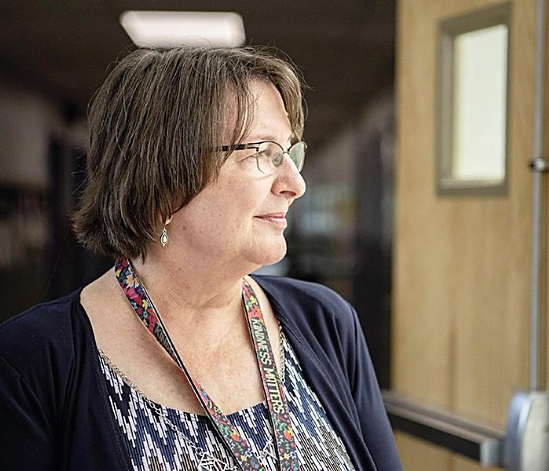states are missing the mark by miles. School nurses in California have one of the heaviest workloads in the country with a studentto-school-nurse ratio of 2,410 students for every nurse, according to the Public Policy Institute of California.
According to research organization Child Trends, California, along with 34 other states and the District of Columbia, requires schools to employ school nurses. Of those, 12 set required nurse-to-student ratios. Seven states encourage schools to have nurses on staff. Eight states don't have mandates on the books.
Still, schools were scrambling over the summer to hire nurses.
Jessica Sawko, director of education for Children Now, a California-based nonprofit organization, said schools struggle not only to retain nurses but also encourage aspiring nurses to consider working in schools. Districts can't compete with the salaries and benefits hospitals offer. The national median salary for school nurses is nearly $55,000 a year, but a registered nurse could make nearly $30,000 more annually working at a hospital.

SURVIVING SHORTAGES: Robin Wallin, director of school health services for Alexandria City Public Schools, says an aging cohort of school nurses has contributed to the nationwide shortage. As nurses retire, she says, "we need to start to replenish our cohorts."
In some states, school nurses need special certification in addition to their nursing degrees.
The lack of school nurses is a byproduct of a larger issue: the nation's overall nursing shortage. Health organizations in general – even those that offer healthy salaries – are facing difficulties hiring and keeping nurses. Around 40% of nurses who participated in a 2023 survey by McKinsey & Co. said they were considering leaving their position.
As a nurse for junior high students, King said she is keenly aware that school nurses sometimes serve as students' only contact with a health care professional, especially at her campus.
World Language Middle School in Columbus, Ohio, where King works, has a diverse student body and takes in many students who are new to the country. "So that requires school nurses like myself to have a very broad range of knowledge of diseases and symptoms," she said.
Robin Wallin, director of school health services for Alexandria City Public Schools, said that another layer of this issue is that school nursing "is an aging cohort." The district has at least one school nurse in each of its 18 campuses – but this year it was a challenge to fill every spot. Many school nurses are aging out, starting to retire, she said. "We need to start to replenish our cohorts."
Bobbitt said the nursing students who shadow her almost never imagine themselves working in a school. "They want to work in the ER, they want to work in the hospital, they want to work in the NICU, or somewhere where they can have that adrenaline," Bobbitt said. "This is a little different," she said, adding that it is fast paced in its own way.
Robin Cogan is a clinical coordinator at Rutgers University's School Nurse Specialty Program in New Jersey, and she said one of the biggest learning curves for nurses who opt to work in school settings is that they are "often an independent practitioner," which involves juggling a lot of responsibilities.
Meanwhile, Bobbitt, working in her brightly colored clinic, stays focused on her daily mission: to address the students' needs as quickly as possible. "We don't want them to miss very much school or much class work," Bobbit said. "That's our goal, right?"
ABOUT THE AUTHOR:
Colleen DeGuzman, Peggy Girshman Fellow, is based in Austin, Texas, and reports on a broad range of public health topics. Previously, she was a reporter for the Austin American-Statesman. She also was a reporting fellow for The Texas Tribune and reporter for The Monitor newspaper in McAllen, Texas. She has had internships at NBC's "Weekend Today" and Ashoka's Washington bureau, and is an NPR Next Generation Radio mentee.
